Home>Garden Essentials>Why Is My Fish Burying Itself In The Greenery
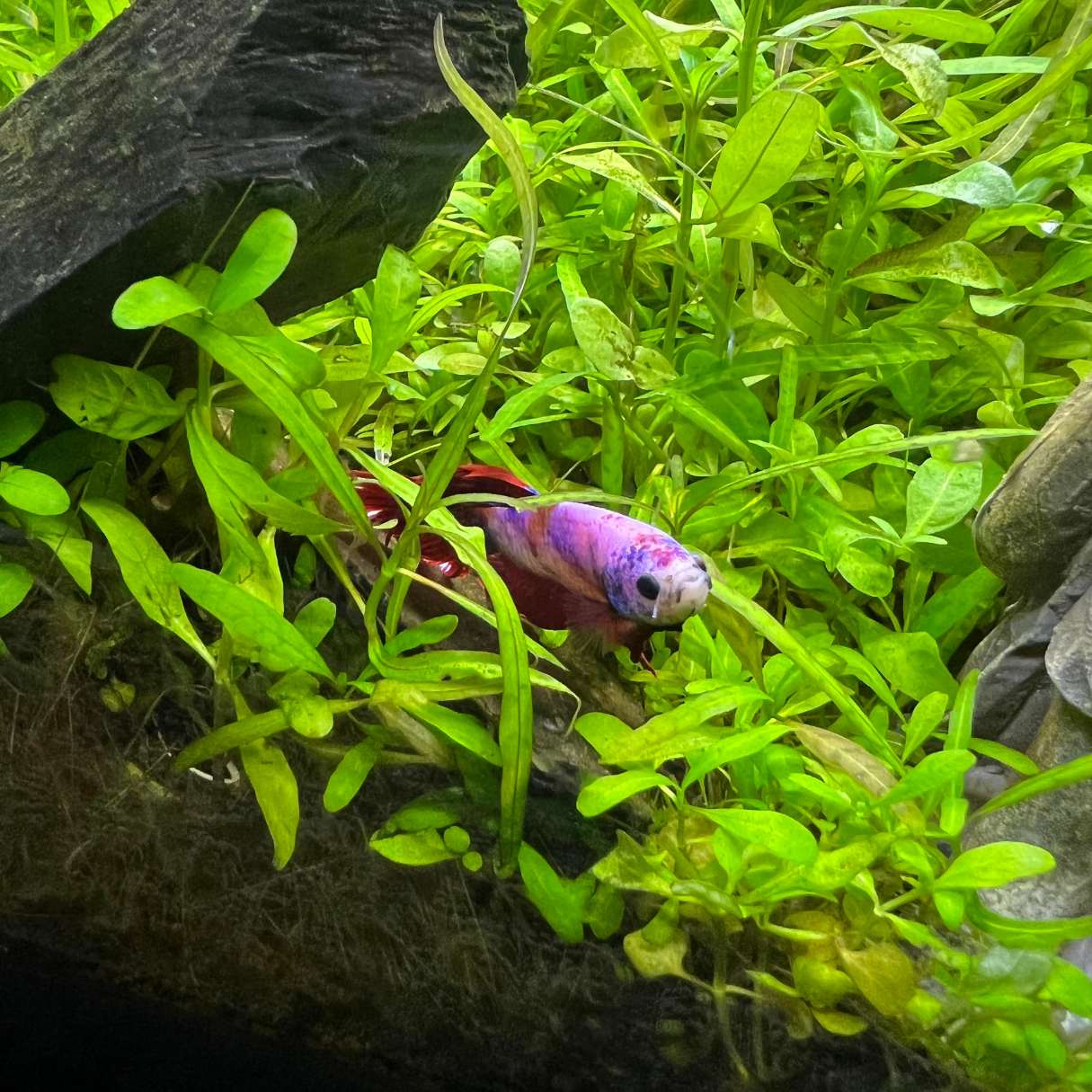

Garden Essentials
Why Is My Fish Burying Itself In The Greenery
Modified: March 7, 2024
Discover why your fish keeps burying itself in the garden and what you can do to create a healthier and more suitable environment for your aquatic friends.
(Many of the links in this article redirect to a specific reviewed product. Your purchase of these products through affiliate links helps to generate commission for Storables.com, at no extra cost. Learn more)
Introduction
Welcome to the fascinating world of fish behavior! If you are a fish owner and have recently noticed your fish burying itself in the greenery of your aquarium, you may be wondering why this behavior is occurring. This article will help shed light on the reasons behind this intriguing behavior and guide you on how to address it if necessary.
Understanding the behavior of our aquatic friends is crucial to providing them with the best possible care and ensuring their well-being. Fish burrowing is a behavior commonly observed in various species, and it can have multiple explanations. By delving into the reasons behind this behavior, we can gain insight into our fish’s needs.
In this article, we will explore the possible causes for fish burying themselves in the greenery of an aquarium. We will discuss factors such as a lack of hiding spots, natural instinct for protection, mating behavior, stress or anxiety, and even disease or illness. By understanding these potential triggers, you will be better equipped to respond appropriately to your fish’s needs.
Remember, every fish is unique, and different species may exhibit varying behaviors. Observing your fish’s behavior patterns and making adjustments accordingly can foster a healthier and more comfortable environment for your aquatic companions. Now, let’s dive into the world of fish burrowing and uncover the mysteries behind this intriguing behavior.
Key Takeaways:
- Fish bury themselves in greenery due to natural instincts, stress, mating behavior, and lack of hiding spots. Providing suitable hiding spaces and maintaining water quality can reduce this behavior and promote fish well-being.
- Consulting a veterinarian is crucial if fish continue to excessively bury themselves, exhibit unusual symptoms, or if underlying health issues are suspected. Addressing stress factors and creating a serene environment are key to reducing burrowing behavior.
Read more: Why Is My Garage Door Opening By Itself
Understanding Burrowing Behavior
Before we delve into the reasons why fish bury themselves in the greenery of their aquarium, it’s important to understand the behavior itself. Burrowing is a natural instinct observed in many species of fish, and it serves various purposes in their underwater world.
When fish burrow, they seek shelter, protection, or even a potential hiding spot for hunting prey. Some species of fish, such as bottom-dwellers like catfish or loaches, are particularly known for their burrowing behavior. These fish have adapted over time to thrive in environments with sandy or muddy substrates, allowing them to create burrows for shelter.
Burrowing behavior can also be a way for fish to create comfortable nests or territories within an aquarium. Male cichlids, for example, may excavate a nest in the substrate where they can attract a mate and protect their offspring.
Furthermore, certain species of fish have a natural inclination to mimic their natural habitat. In the wild, fish might burrow under rocks, logs, or plants for protection or camouflage. When placed in an aquarium with artificial plants, they may still exhibit burrowing behavior as a way to recreate their natural environment.
Understanding the underlying motives behind fish burrowing behavior is crucial for providing them with a suitable environment. If your fish is displaying this behavior, it’s essential to explore the potential reasons behind it, ensuring their specific needs are met. In the following sections, we will explore some of the possible factors that may lead to fish burying themselves in the greenery of your aquarium.
Possible Reasons for Burrowing
When your fish buries itself in the greenery of your aquarium, there can be several reasons behind this behavior. Let’s explore some of the potential factors that may contribute to your fish’s burrowing tendencies:
Lack of Hiding Spots: Fish naturally seek hiding spots in their environment to feel secure. If your aquarium lacks sufficient hiding spots such as caves, rocks, or driftwood, your fish may resort to burrowing in the greenery to find a sense of safety.
Natural Instinct for Protection: Burrowing behavior can be an instinctual response to perceived threats. When fish feel vulnerable or stressed, they may seek refuge in the greenery to hide from potential predators or to avoid aggressive tank mates.
Mating Behavior: Burrowing can also be related to mating behavior in certain species. As mentioned earlier, male cichlids, for example, may dig nests in the substrate to attract female partners and provide a safe environment for their eggs and fry.
Stress or Anxiety: Fish can experience stress or anxiety due to various factors such as overcrowding, inadequate water conditions, aggression from tank mates, or sudden changes in their environment. Burrowing in the greenery may be a sign that your fish is trying to cope with these stressors.
Disease or Illness: In some cases, fish may burrow themselves in the greenery as a result of underlying health issues. Certain diseases or infections can cause discomfort, leading fish to seek solace by hiding in the plants.
It’s important to note that while these are common reasons for fish burrowing, there may be specific factors related to your individual fish or aquarium setup. Observing your fish’s behavior patterns and considering their unique needs can help you determine the most likely cause of their burrowing behavior.
In the next sections, we will explore how to address burrowing behavior and ensure the well-being of your fish.
Lack of Hiding Spots
One potential reason why your fish may be burying itself in the greenery of your aquarium is a lack of adequate hiding spots. Fish naturally seek sheltered areas where they can retreat and feel secure, and the absence of these hiding spots can lead to increased burrowing behavior.
Having proper hiding spots in your aquarium is crucial for the well-being of your fish. These hiding spots serve multiple purposes, including providing a sense of security, reducing stress, and mimicking their natural habitat. Without these hiding spots, your fish may resort to burrowing in the greenery as a substitute.
So, what can you do to address this issue? Here are some steps you can take to provide your fish with the hiding spots they need:
- Decorate with Caves and Diverse Structures: Incorporate caves, rock formations, driftwood, or other aquarium decorations that provide hiding spots for your fish. These structures not only serve as shelter but also add visual interest to your aquarium.
- Add Live Plants: Live plants not only improve water quality, but they also create a natural and appealing environment for your fish. Plants such as Java Fern, Anubias, or Amazon Sword provide hiding places and allow your fish to feel more secure.
- Utilize Artificial Plants: If live plants are not suitable for your setup, artificial plants can still offer hiding spots for your fish. Choose plants with dense foliage or tall structures that can provide shade and cover.
- Create Multiple Levels: Incorporate different levels in your aquarium design. This allows fish to utilize vertical spaces and find hiding spots at different heights, providing a more dynamic and interesting environment.
- Consider Species-Specific Needs: Different fish species have unique hiding preferences. Research the specific requirements of your fish and provide hiding spots that cater to their natural behaviors. Some fish may prefer caves, while others may enjoy dense vegetation.
By implementing these measures, you can create an environment that offers ample hiding spots for your fish, reducing their need to bury themselves in the greenery of the aquarium. Providing these hiding spots not only promotes their mental well-being but also helps alleviate stress and territorial conflicts among tank mates.
Remember, every fish is unique, and their hiding preferences can vary. Observe their behavior and make adjustments as needed to ensure they have a safe and comfortable environment in which to thrive.
Natural Instinct for Protection
Another reason why your fish may be burying itself in the greenery of your aquarium is its natural instinct for protection. Fish have evolved various defense mechanisms to survive in their underwater habitat, and seeking refuge in the greenery is one such instinctual behavior.
When fish feel threatened or stressed, they instinctively search for hiding spots to avoid potential predators or aggressive tank mates. The greenery in your aquarium provides a natural camouflage, allowing them to blend in and feel safer. By burying themselves in the greenery, fish can reduce their visibility and minimize the risk of predation or aggression.
While this instinctual behavior is natural, excessive burrowing can be an indication that your fish is experiencing stress or anxiety. It’s important to assess the factors within the aquarium that may be causing this behavior and address them accordingly.
To address the natural instinct for protection and minimize excessive burrowing, consider the following steps:
- Ensure Sufficient Space: Overcrowding can lead to heightened stress levels among fish. Assess the number of fish in your aquarium and make sure there is enough space for each fish to establish territorial boundaries and reduce conflicts.
- Monitor Aggression: Aggressive tank mates can cause stress and anxiety to other fish, triggering excessive burrowing behavior. Observe the interactions between your fish and consider separating or rehoming any individuals with consistently aggressive behavior.
- Create Visual Barriers: Introduce decorations or plants that create visual barriers within the aquarium. These barriers can help break the line of sight between fish, reducing stress and providing additional hiding spots.
- Maintain a Calm Environment: Avoid sudden loud noises, vibrations, or disruptions near your aquarium, as they can startle and stress your fish. Keep the aquarium in a serene area of your home to provide a peaceful and calming environment for your fish.
By implementing these measures, you can help alleviate stress and anxiety in your fish, reducing their need to bury themselves excessively in the greenery. Providing a calm and harmonious environment promotes the natural behaviors of your fish and supports their overall health and well-being.
That being said, if your fish continues to display excessive burrowing, it is always a good idea to consult with a knowledgeable aquarium specialist or veterinarian to ensure there are no underlying health issues contributing to this behavior.
Read more: Why Does My Lamp Turn On And Off By Itself
Mating Behavior
Mating behavior is another potential reason why your fish may be burying itself in the greenery of your aquarium. In the underwater world, many fish species exhibit specific behaviors associated with courtship, breeding, and nest-building.
Some fish, especially certain species of cichlids and labyrinth fish, engage in elaborate mating rituals that involve creating nests or territories. Male fish are known to excavate a nest in the substrate, often using their mouths or fins to move gravel, rocks, or vegetation.
By burying themselves in the greenery, fish may be engaging in nesting behavior. This behavior is commonly observed in species such as bettas, gouramis, and angelfish that construct bubble nests near the water’s surface.
When fish bury themselves in the greenery for mating behavior, it is typically the males taking the lead. By creating a nest and attracting a female, the male fish establishes himself as a suitable mate and provides a safe environment for spawning and protecting the eggs or fry.
If you observe fish burying themselves in the greenery for mating behavior, it’s crucial to provide an environment that supports their natural instincts. Here are some considerations to facilitate successful mating behavior:
- Appropriate Tank Setup: Research the specific needs of the fish species involved and provide an aquarium setup that mimics their natural habitat. This may include the right type of substrate, plants, and decorations that facilitate nesting behavior.
- Creating Spawning Areas: In addition to the greenery, consider incorporating specific breeding structures such as flat rocks, spawning mops, or dedicated breeding cones. These structures provide additional surfaces for egg deposition and can help stimulate mating behavior.
- Maintaining Water Conditions: Ensure that the water parameters are suitable for the species involved. Maintaining proper temperature, pH levels, and water quality is essential for the health and successful breeding of your fish.
- Monitoring Aggression: During mating, some fish may display increased territorial aggression. Observe the interactions between the fish and be prepared to separate individuals if aggression becomes excessive or poses a threat to their well-being.
By providing the right conditions and supporting their natural mating behavior, you increase the chances of successful breeding and the continuation of their species within the aquarium.
Remember, not all fish species exhibit mating behaviors in captivity, and certain species require specific environmental cues to trigger breeding. Researching the specific requirements of your fish species is crucial in creating an ideal environment for their natural reproductive behaviors.
If you are interested in breeding your fish, it’s advisable to consult with experienced breeders or seek guidance from knowledgeable aquatic specialists to ensure the best possible conditions for successful mating and breeding outcomes.
Stress or Anxiety
Stress or anxiety can be a significant factor contributing to your fish burying itself in the greenery of your aquarium. Like any living creature, fish can experience stress due to various factors in their environment. Understanding and addressing these stressors is essential to help alleviate their anxiety and promote their overall well-being.
Several factors can contribute to stress or anxiety in fish, including:
- Overcrowding: When an aquarium is overcrowded with too many fish, it can lead to competition for resources, increased aggression, and heightened stress levels.
- Inadequate Water Conditions: Poor water quality, improper pH levels, high ammonia or nitrite levels, and temperature fluctuations can all cause stress and negatively impact fish health.
- Aggressive Tank Mates: Constant harassment or aggression from tank mates can create a stressful environment for your fish. In such cases, they may seek refuge in the greenery to hide from aggressive individuals.
- Environmental Changes: Fish are sensitive to sudden changes in their environment. Moving or rearranging aquarium decorations, introducing new tank mates, or making rapid changes to water parameters can induce stress in your fish.
When fish experience stress or anxiety, they may exhibit behaviors like increased hiding, reduced appetite, erratic swimming patterns, or in this case, excessive burrowing. It is important to address these stressors and create a calm and stable environment for your fish. Here are some steps you can take:
- Regular Water Maintenance: Test and maintain optimal water parameters, including temperature, pH, ammonia, nitrite, and nitrate levels. Performing regular water changes and using quality filtration systems can help ensure a healthy aquatic environment.
- Provide Adequate Space: Avoid overcrowding your aquarium. Research the specific needs and compatibility of your fish species to determine the appropriate number for your tank size.
- Observe and Address Aggression: Monitor the behavior of your fish and be prepared to separate individuals if aggression becomes excessive. Provide adequate hiding spots and ensure that fish have space to establish territories.
- Minimize Environmental Changes: Avoid sudden or drastic changes in the aquarium setup. When introducing new decor, tank mates, or adjusting water parameters, do so gradually to minimize stress on your fish.
- Establish a Calm Environment: Create a peaceful atmosphere around your aquarium. Avoid loud noises, vibrations, or sudden movements near the tank that could startle or stress your fish.
By addressing these stressors and creating a stable and calm environment, you can help alleviate stress and anxiety in your fish, reducing their need to bury themselves in the greenery. Regular observation of your fish’s behavior will also assist in detecting any signs of stress early on, allowing for prompt action.
If your fish continue to exhibit persistent or severe signs of stress, it is recommended to consult with a qualified veterinarian or aquatic specialist. They can provide further guidance and assistance in identifying and resolving the underlying causes of stress in your fish.
Make sure your fish have enough hiding spots in the tank. They may bury themselves in the greenery to feel safe and secure. Adding more decorations or plants can help reduce stress.
Disease or Illness
Disease or illness can be another potential reason why your fish may be burying itself in the greenery of your aquarium. When fish are unwell, they may exhibit abnormal behaviors as a result of discomfort or pain. Burying themselves in the greenery could be a sign of underlying health issues.
There are several common diseases and illnesses that can affect fish, including bacterial or fungal infections, parasitic infestations, and viral diseases. These conditions can cause various symptoms such as lethargy, loss of appetite, abnormal swimming patterns, and changes in behavior.
When fish are ill, they may seek hiding spots or bury themselves in the greenery as a response to pain or discomfort. This behavior can be an attempt to find some level of relief or to conceal themselves from potential aggressors.
If you suspect that disease or illness is the cause of your fish’s burrowing behavior, it is crucial to take appropriate action to address the issue. Here are some steps you can take:
- Observation and Identification: Keep a close eye on your fish and look for any accompanying symptoms such as abnormal coloration, sores, fin deterioration, or external parasites. Research common fish diseases to help you identify potential causes.
- Quarantine: If you have multiple fish in your aquarium, consider quarantining any fish that display signs of illness. This will help prevent the spread of disease to other fish and allow for targeted treatment.
- Water Quality and Parameters: Ensure that your aquarium water is well-maintained with appropriate temperature, pH levels, and adequate filtration. Poor water quality can stress fish and make them more susceptible to diseases.
- Consultation with a Veterinarian: If your fish continues to exhibit signs of illness or if you are unsure about the cause of their burrowing behavior, it is advisable to consult with a veterinarian who specializes in aquatic health. They can provide a professional diagnosis and recommend appropriate treatments.
- Treatment: Depending on the specific disease, treatment options may include medicated foods, aquarium additives, or medications administered directly into the water. Follow the veterinarian’s suggestions for effective treatment.
- Quarantine Tank Maintenance: If quarantine is necessary, ensure that the quarantine tank has appropriate conditions and is regularly maintained to provide the best chances of successful treatment and recovery.
Keep in mind that proper diagnosis and treatment of fish diseases require knowledge and expertise. It is important to consult with a veterinarian or aquatic specialist who can provide accurate guidance and enhance the chances of a successful recovery for your fish.
By promptly addressing and treating any signs of illness, you can help alleviate your fish’s discomfort and reduce their need to bury themselves in the greenery. Ensuring a healthy and disease-free environment contributes to the overall well-being of your aquatic companions.
Addressing Burrowing Behavior
Now that we have explored the possible reasons behind fish burying themselves in the greenery of your aquarium, it’s time to discuss how you can address this behavior and ensure the well-being of your fish.
Understanding your fish’s needs and providing appropriate solutions can help reduce excessive burrowing and create a comfortable environment for your aquatic friends. Here are some steps you can take to address burrowing behavior:
- Providing Adequate Hiding Spaces: Ensure that your aquarium has sufficient hiding spots such as caves, rocks, or driftwood. These hiding spots offer refuge and security for your fish, reducing the need for them to bury themselves in the greenery. Choose decorations that mimic their natural habitat and cater to their species-specific needs.
- Ensuring Water Quality: Maintain optimal water conditions by regularly testing and monitoring parameters such as temperature, pH, ammonia, nitrite, and nitrate levels. Clean the aquarium regularly, perform water changes as needed, and use quality filtration systems to keep the water clean and healthy.
- Reducing Stress Factors: Minimize stress in your fish by providing a calm and stable environment. Avoid sudden changes in lighting, temperature, or the addition of new tank mates. Keep noise levels low, and create a peaceful atmosphere around the aquarium to help your fish feel secure.
- Creating a Varied Environment: Add a variety of plant species with different heights and densities to provide a dynamic and stimulating environment. This encourages exploration and offers alternative hiding spots for your fish, diverting their attention from excessive burrowing in the greenery.
- Monitoring Tank Mates: Observe the interactions between your fish and assess the compatibility of different species. Remove any overly aggressive tank mates that may be causing stress or anxiety for your fish. Introduce new fish gradually and monitor their behavior closely.
- Consulting a Veterinarian: If your fish continues to display excessive burrowing behavior or if you suspect underlying health issues, it is advisable to consult with a veterinarian who specializes in aquatic health. They can provide a professional assessment and recommend appropriate treatments or further actions.
By implementing these strategies, you can help address the burrowing behavior in your fish and create a more comfortable and suitable environment for them. Remember, each fish is unique, and their specific needs should be taken into account when addressing their behavior.
Regular observation and interaction with your fish will give you valuable insights into their preferences and overall well-being. Adjustments may be necessary as you continue to learn and understand your fish’s behavior better.
Maintaining a healthy and enriching environment for your fish not only promotes their physical and mental well-being but also enhances the overall beauty and enjoyment of your aquarium. So, take the time to provide the best care possible for your fish, and they will reward you with their vibrant presence and natural behaviors.
Read more: Why Did My Door Lock By Itself
Providing Adequate Hiding Spaces
One crucial aspect of addressing the burrowing behavior in your fish is to ensure that your aquarium provides adequate hiding spaces. Fish have a natural instinct to seek sheltered areas for security and to establish territories. Without proper hiding spots, your fish may resort to burying themselves in the greenery of the tank.
Here are some key considerations when it comes to providing sufficient hiding spaces for your fish:
- Choose Appropriate Decorations: Incorporate a variety of decorations, such as caves, rocks, or driftwood, which offer hiding spots for your fish. These structures not only provide shelter but also add visual interest and mimic their natural habitat.
- Add Live Plants: Live plants not only serve as hiding spots but also contribute to the overall health of the aquarium. Plants with dense foliage, such as Java Fern or Anubias, provide excellent coverage and create a natural environment that promotes the well-being of your fish.
- Utilize Artificial Plants: If live plants are not suitable for your setup, artificial plants can still offer hiding spots for your fish. Choose plants with varied heights and densities to provide different shelter levels and create a visually appealing aquarium.
- Create Caves and Tunnels: Incorporate structures that simulate caves or tunnels, particularly for species that naturally seek shelter in such environments. These structures can be made from materials like PVC pipes, clay pots, or even purpose-made aquarium decorations.
- Consider Fish Species Needs: Different fish species have varying preferences when it comes to hiding spots. Some fish may prefer caves, while others may enjoy swimming through dense vegetation. Research the specific requirements of your fish and modify the aquarium accordingly.
When arranging the hiding spots, distribute them throughout the tank to ensure every part of the aquarium offers suitable retreats for your fish. By providing a variety of hiding options, you enable different fish to find their preferred shelter and establish territories, reducing the need for excessive burrowing.
It’s important to note that the number and size of hiding spaces should be adjusted based on the size of your fish and the specific needs of the species. Creating an environment that mirrors their natural habitat enhances their sense of security and encourages more natural behaviors.
Regularly observe your fish to ensure they have adequate access to the hiding spots. Monitor their behavior and adjust the arrangement as needed to meet their preferences and ensure they can comfortably retreat when desired. Pay attention to any signs of stress or aggression that may indicate a lack of hiding spaces.
By providing sufficient hiding spaces, you create a more harmonious and secure environment for your fish. This helps reduce their need to bury themselves in the greenery while promoting their natural behaviors and overall well-being.
Ensuring Water Quality
Water quality plays a fundamental role in the health and well-being of your fish. Poor water conditions can cause stress, weaken immune systems, and contribute to various health issues. Ensuring optimal water quality is a key aspect of addressing the burrowing behavior in your fish.
Here are some important factors to consider in maintaining suitable water quality for your aquarium:
- Regular Water Testing: Test the water parameters regularly to monitor key factors such as temperature, pH levels, ammonia, nitrite, and nitrate levels. This allows you to identify any fluctuations or imbalances that could potentially harm your fish.
- Appropriate Filtration: Use a reliable filtration system that matches the size and requirements of your aquarium. A good filter helps remove debris, excess waste, and harmful pollutants, ensuring cleaner and healthier water for your fish.
- Regular Water Changes: Perform routine water changes to maintain water quality and remove accumulated toxins. This helps dilute harmful substances and replenish essential minerals, promoting a stable and conducive environment for your fish.
- Conditioning and Dechlorination: Treat tap water with a water conditioner to remove chlorine, chloramine, and heavy metals before adding it to your aquarium. These chemical additives can be harmful to fish and may affect water quality.
- Monitoring Oxygen Levels: Ensure proper oxygenation of the water by using an appropriately sized air pump or adding a suitable air stone. Sufficient oxygen levels are vital for the well-being of your fish, supporting their respiration and overall health.
- Keep a Clean Environment: Regularly remove uneaten food, dead plant matter, and debris from the tank. This prevents the accumulation of organic waste, which can degrade water quality and negatively impact your fish.
Consistently monitoring and maintaining proper water quality is essential for addressing burrowing behavior and promoting the overall health of your fish. Poor water conditions can lead to stress and discomfort, prompting fish to seek refuge in the greenery or show other abnormal behaviors.
Remember, it is important to research the specific water requirements of your fish species. Different fish have different preferences when it comes to temperature, pH levels, and water hardness. Adapting the water parameters to match their natural habitat minimizes stress and allows them to thrive.
Regular observation of your fish’s behavior and appearance can provide valuable insights into the water conditions. If you notice any signs of distress, such as gasping at the surface, fin clamping, or color fading, it could be an indication of poor water quality.
By maintaining optimal water quality, you create a healthier and more stable environment for your fish. This contributes to their overall well-being, reduces their need to seek refuge in the greenery, and helps them display more natural behaviors in their aquatic home.
Reducing Stress Factors
Stress can have a significant impact on the behavior and well-being of your fish. When fish experience stress, they may exhibit abnormal behaviors, such as excessive burrowing. Reducing stress factors plays a vital role in addressing this behavior and creating a more peaceful and comfortable environment for your aquatic companions.
Here are some important steps you can take to reduce stress factors in your aquarium:
- Provide Sufficient Space: Overcrowding can lead to increased stress levels in fish. Ensure that your aquarium is appropriately sized for the species you keep and allow enough room for them to swim and establish territories. A spacious environment helps promote natural behaviors and reduces stress-related behaviors like burrowing.
- Ensure Compatibility: Some fish species are naturally more aggressive or territorial than others. Research the compatibility of your fish companions to avoid unnecessary aggression. Introduce compatible tank mates, and carefully monitor their behavior to prevent stress-inducing interactions.
- Establish Hierarchy: In community aquariums, it is important to establish a social hierarchy among different fish species. This reduces aggressive behavior and minimizes stress levels. Provide ample hiding spots and create visual barriers to allow fish to establish territories and retreat when needed.
- Maintain Water Parameters: Fluctuations or extremes in water temperature, pH levels, or water hardness can stress fish. Research the ideal water conditions for your fish species and maintain stable water parameters within their preferred range. Sudden changes should be avoided, as they can be highly stressful for fish.
- Consistent Feeding Routine: Establish a regular feeding routine for your fish. Consistency in feeding times and providing a balanced diet helps reduce stress associated with hunger or unexpected scarcity of food. Avoid overfeeding, as it can lead to water quality issues and additional stress for your fish.
- Create a Calm Environment: Limit disturbances around the aquarium that may startle or stress your fish. Avoid sudden loud noises, vibrations, or frequent movements in the vicinity. Provide a quiet and peaceful atmosphere, allowing your fish to thrive in a calm environment.
Alongside these steps, closely observe your fish for any signs of stress or discomfort. Look for indications of poor health such as loss of appetite, unusual swimming patterns, or changes in coloration. Promptly address any issues to prevent stress-related behaviors, like excessive burrowing, from worsening.
Remember, each fish species has unique requirements and behaviors, and what may be suitable for one may not be optimal for another. Research the specific needs of your fish, and make adjustments accordingly to maintain a stress-free environment.
By reducing stress factors, you create a more serene and harmonious habitat for your fish. This not only helps address burrowing behavior but also promotes their overall health and enhances their natural behaviors within the confines of your aquarium.
Consulting a Veterinarian
If your fish continues to display persistent or concerning burrowing behavior or if you suspect underlying health issues, it is crucial to seek professional guidance from a veterinarian specializing in aquatic health. Consulting a veterinarian can provide invaluable support in addressing the issue and ensuring the well-being of your fish.
Aquatic veterinarians are trained professionals with expertise in diagnosing and treating fish diseases and disorders. They possess the knowledge and experience to identify the underlying causes of your fish’s burrowing behavior and provide appropriate solutions.
Here are some instances when consulting a veterinarian is advisable:
- Prolonged or Severe Burrowing: If your fish continues to excessively bury itself in the greenery over a prolonged period or if the burrowing behavior becomes severe, it may indicate an underlying health issue that requires professional attention.
- Unusual Symptoms or Behaviors: If your fish exhibits other abnormal symptoms or behaviors alongside burrowing, it is important to consult a veterinarian. These symptoms may include loss of appetite, abnormal swimming patterns, discoloration, or any other signs of distress.
- Unknown Cause: If you are unsure about the cause of the burrowing behavior or if you have tried various remedies without success, a veterinarian can provide a professional diagnosis and recommend appropriate treatments.
- Prioritizing Fish Health: If you value the health and well-being of your fish and want to ensure the best possible care, consulting a veterinarian demonstrates your commitment to their welfare. They can offer expert advice, preventive measures, and guidance on maintaining a healthy aquarium.
- Health Precautions: Consulting a veterinarian is particularly important if you have multiple fish in your aquarium or if you suspect the presence of a contagious disease. Proper diagnosis and treatment can help prevent the spread of illnesses and protect the overall health of your fish population.
Veterinarians specializing in aquatic health possess the knowledge and skills to conduct thorough examinations, perform tests, and recommend appropriate treatments. They will consider all possible factors contributing to your fish’s burrowing behavior and develop a tailored plan to address the underlying causes.
Be prepared to provide relevant information when consulting a veterinarian, such as details about your fish species, aquarium setup, water parameters, and any observable signs or changes in behavior. This information will help them make a more accurate diagnosis and provide appropriate recommendations.
Remember, prevention is better than cure. Regular check-ups and consultations with a veterinarian can help identify and address potential issues before they escalate. Establishing a relationship with an aquatic veterinarian ensures that you have a reliable resource to turn to whenever a health concern arises.
By consulting a veterinarian, you can gain peace of mind, enhance your fish’s quality of life, and receive expert guidance to resolve any health-related concerns effectively.
Conclusion
Understanding and addressing the burrowing behavior in your fish is essential for their well-being and maintaining a harmonious aquarium environment. Fish may bury themselves in the greenery for various reasons, including a lack of hiding spots, natural instinct for protection, mating behavior, stress or anxiety, and even underlying diseases.
By providing adequate hiding spaces, you give your fish the opportunity to feel secure and establish their own territories. Incorporating caves, rocks, driftwood, and plants, whether live or artificial, creates a diverse and enriching environment for your fish to explore and find refuge.
Ensuring optimal water quality is crucial in reducing stress levels and promoting the health of your fish. Regularly testing water parameters, maintaining a reliable filtration system, performing routine water changes, and ensuring proper conditioning help create a clean and conducive habitat.
Reducing stress factors such as overcrowding, aggression, sudden environmental changes, and inconsistent feeding routines contributes to a peaceful and stress-free environment. These factors directly impact the behavior and overall well-being of your fish.
Consulting a veterinarian specializing in aquatic health is highly recommended if your fish’s burrowing behavior persists or if you suspect underlying health issues. A veterinarian can provide professional guidance, diagnose potential ailments, and recommend appropriate treatments to address the root cause of the behavior.
In conclusion, creating a suitable and supportive environment for your fish requires a holistic approach that considers their specific needs, ensuring they have ample hiding spaces, optimal water conditions, and minimal stress factors. Regular observation of their behavior and prompt action when necessary play a crucial role in providing optimal care for your fish.
Remember, each fish is unique, and finding the right balance of elements in their environment may require some trial and error. With patience, attention, and a commitment to their well-being, you can enjoy a thriving aquarium that allows your fish to exhibit their natural behaviors and flourish in a safe and comfortable home.
Frequently Asked Questions about Why Is My Fish Burying Itself In The Greenery
Was this page helpful?
At Storables.com, we guarantee accurate and reliable information. Our content, validated by Expert Board Contributors, is crafted following stringent Editorial Policies. We're committed to providing you with well-researched, expert-backed insights for all your informational needs.




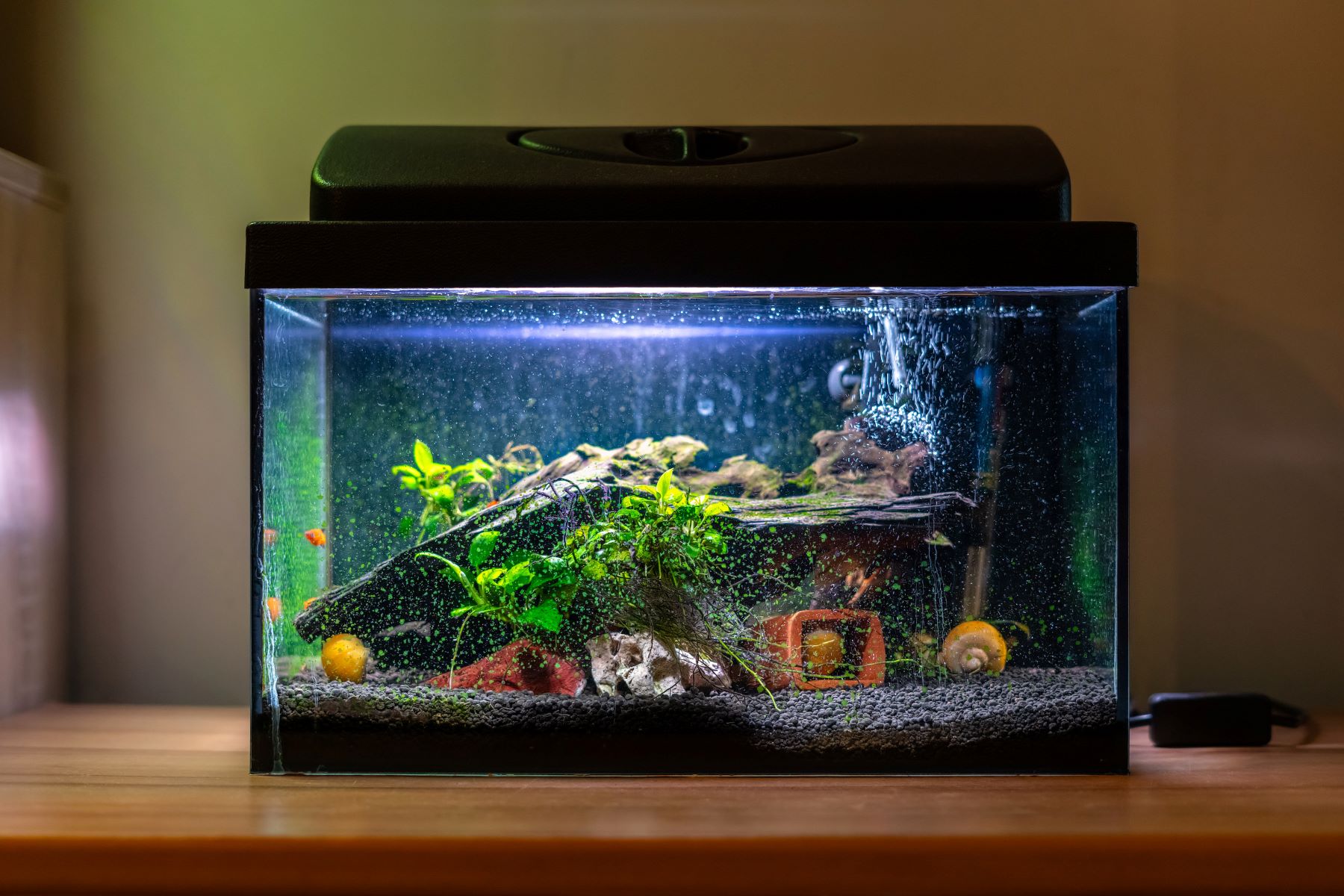



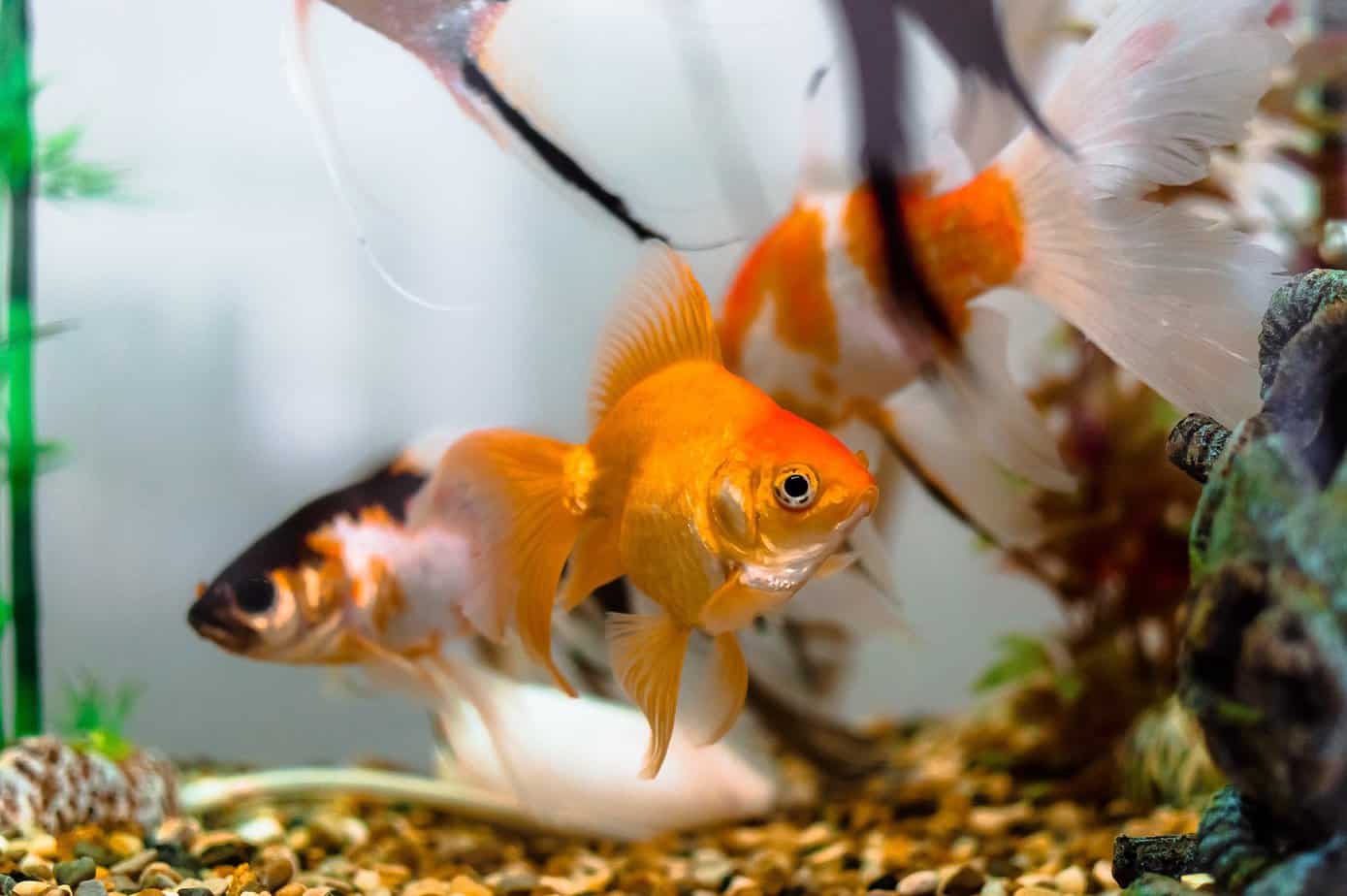
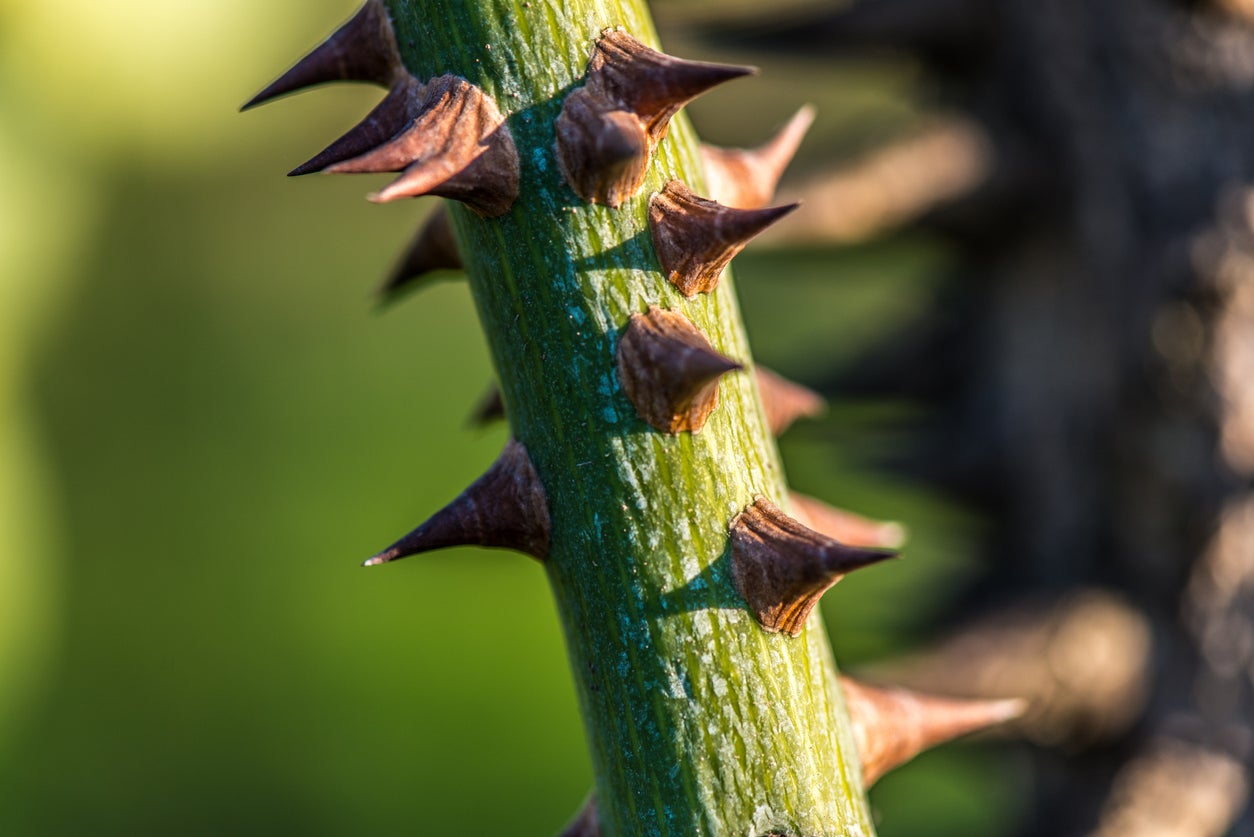
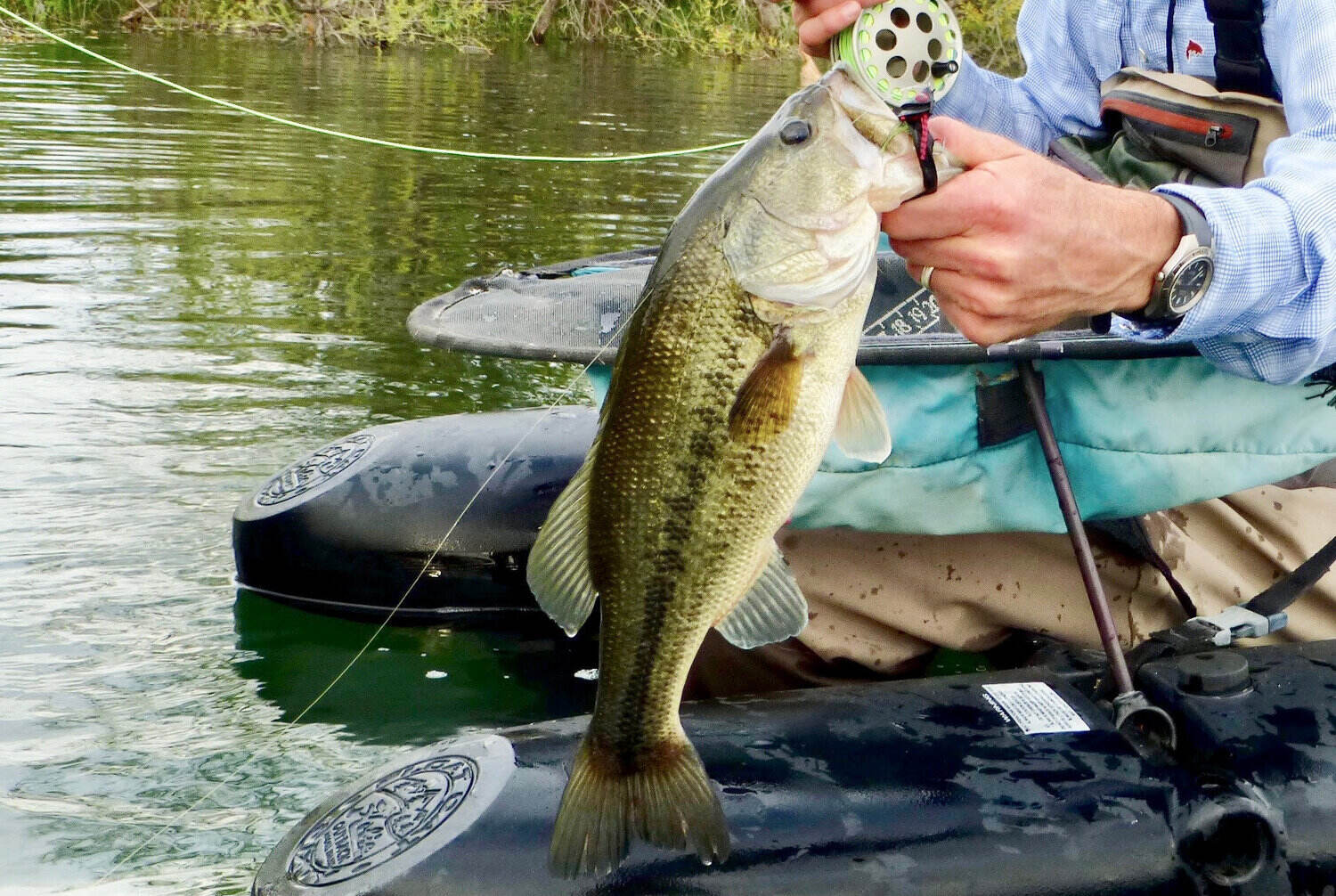
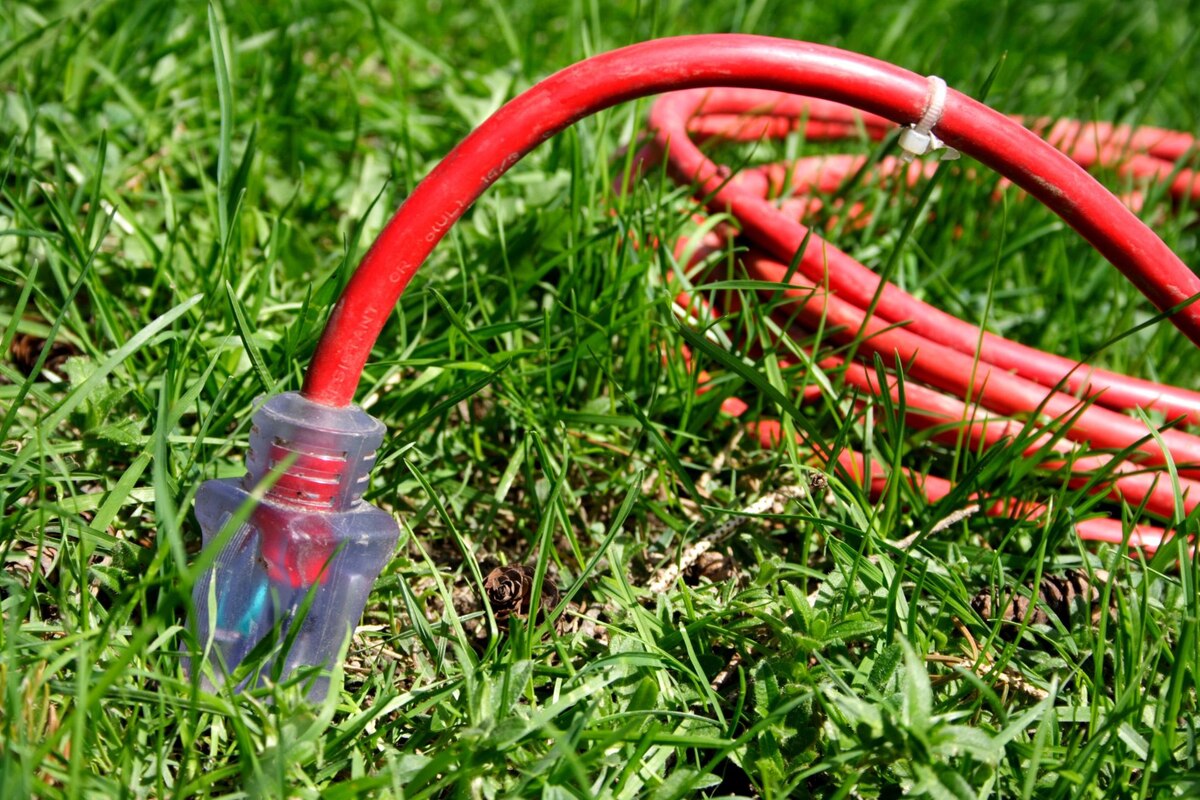

0 thoughts on “Why Is My Fish Burying Itself In The Greenery”